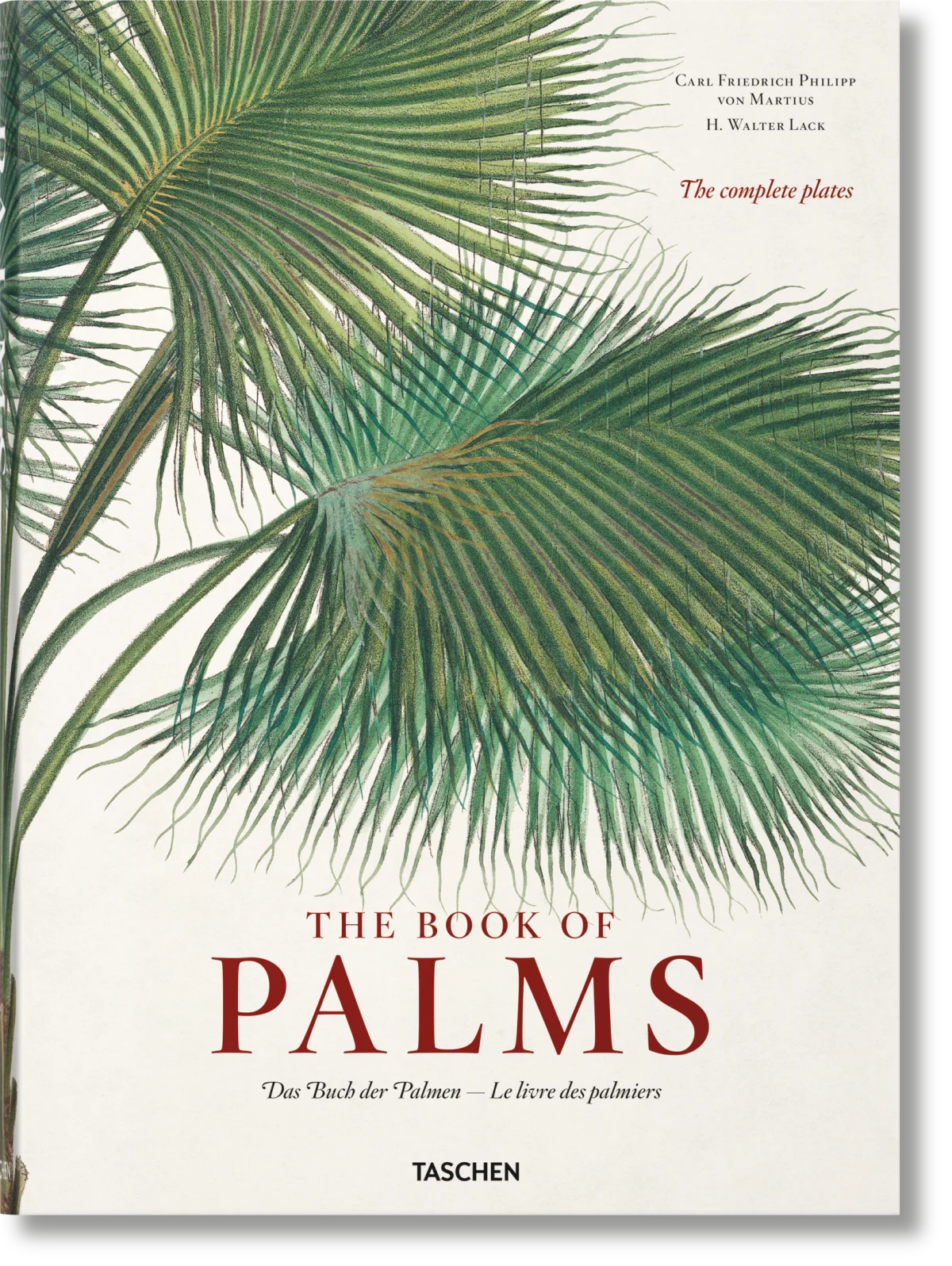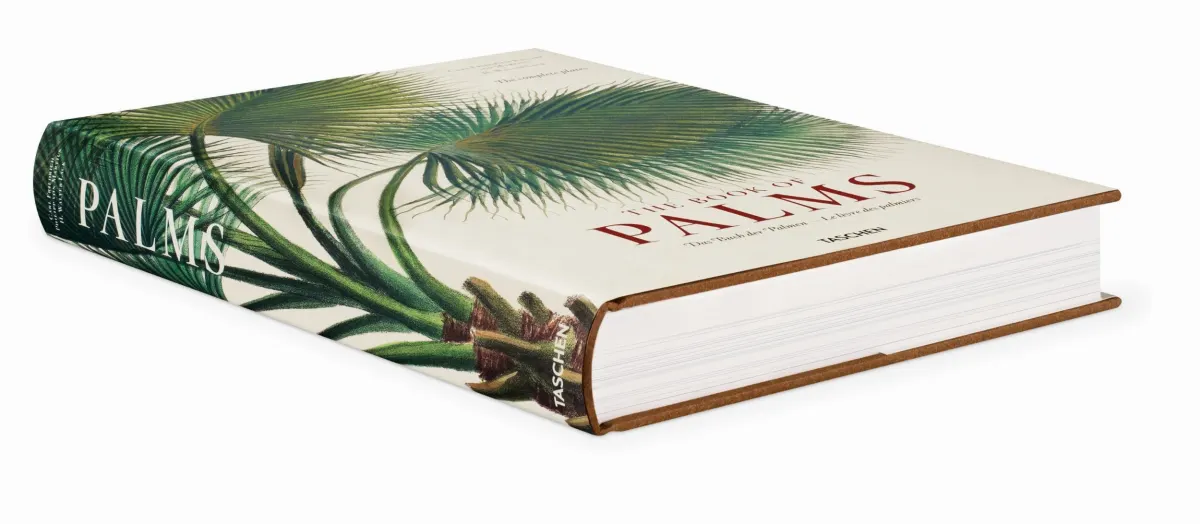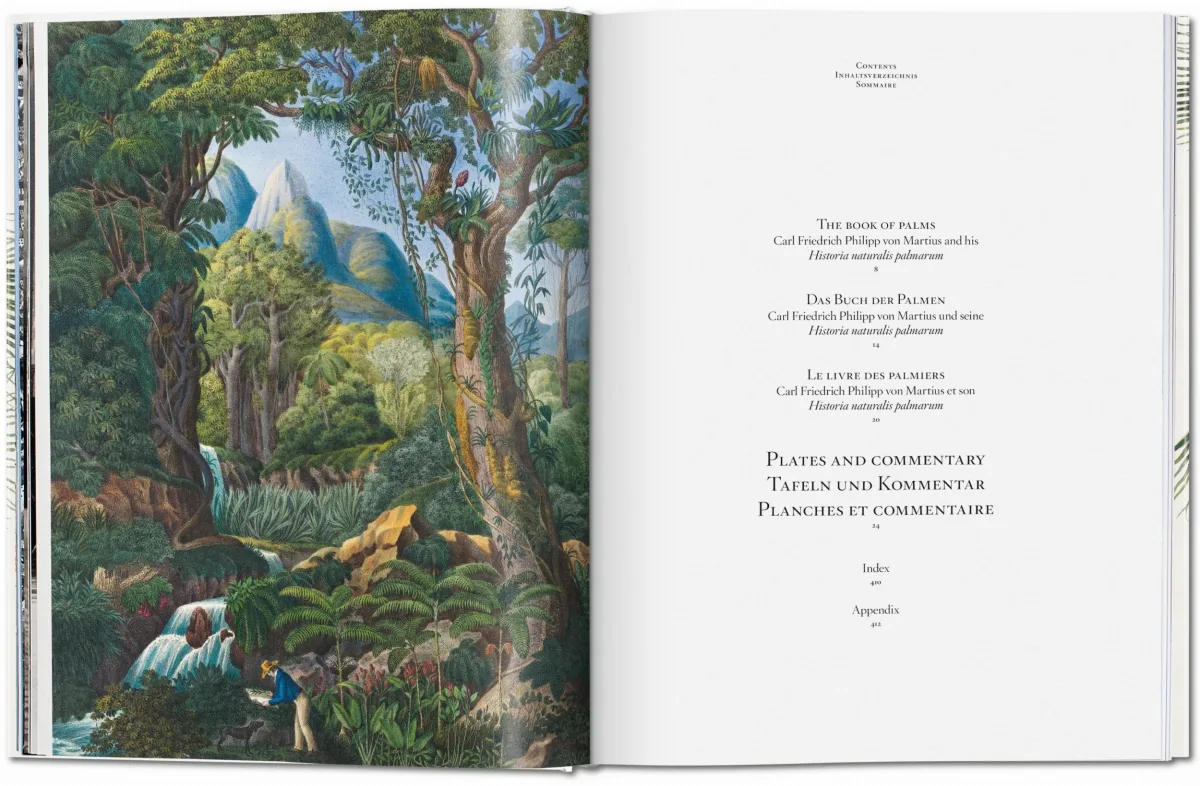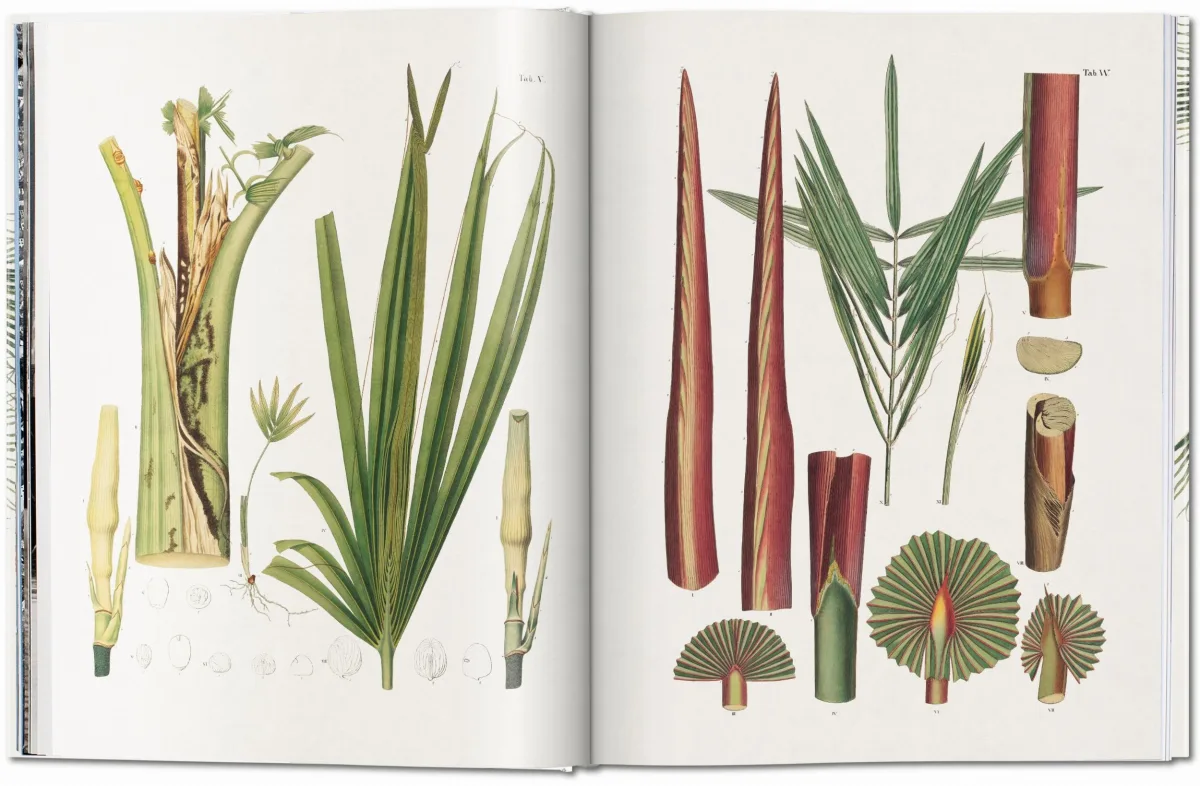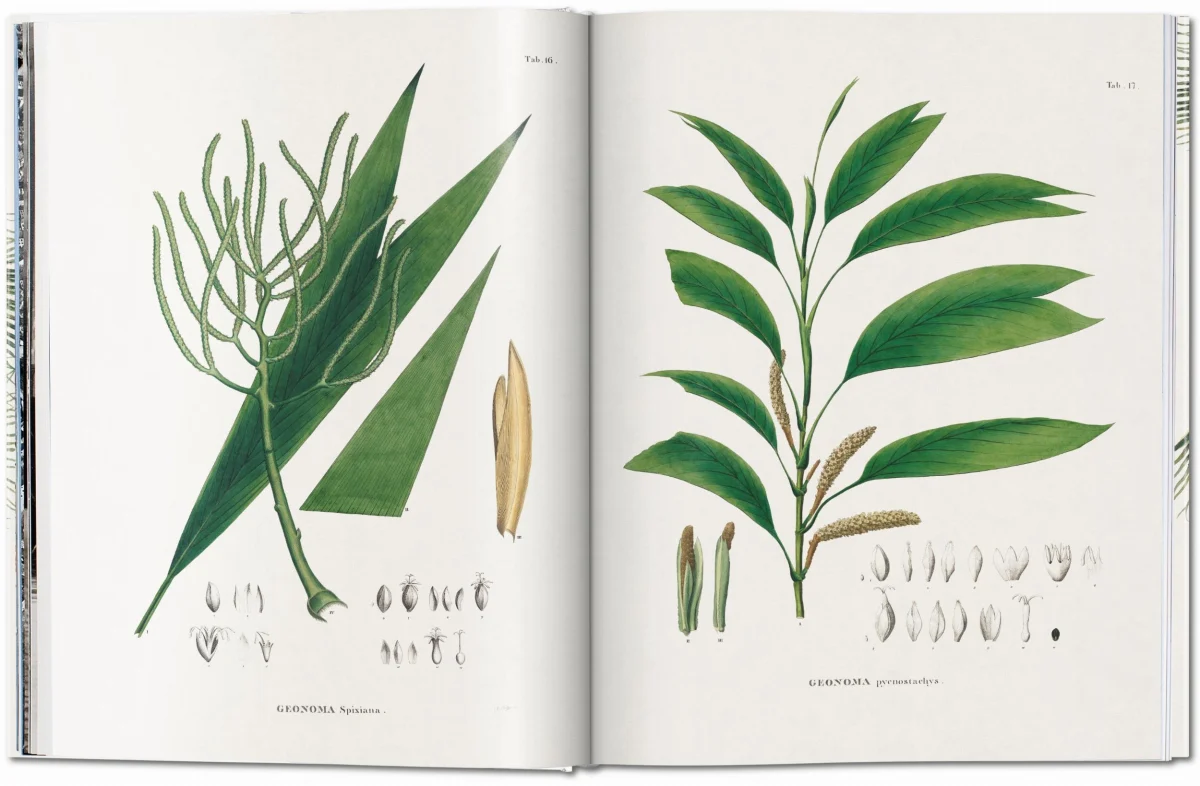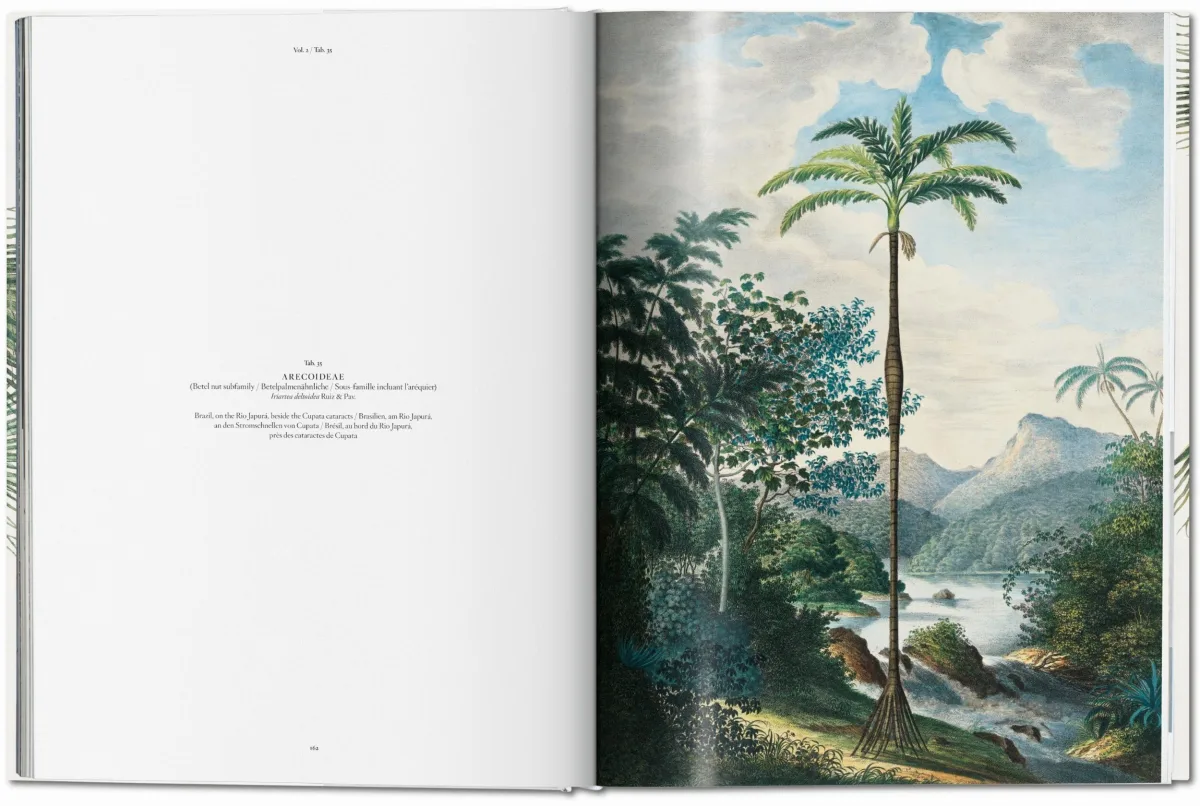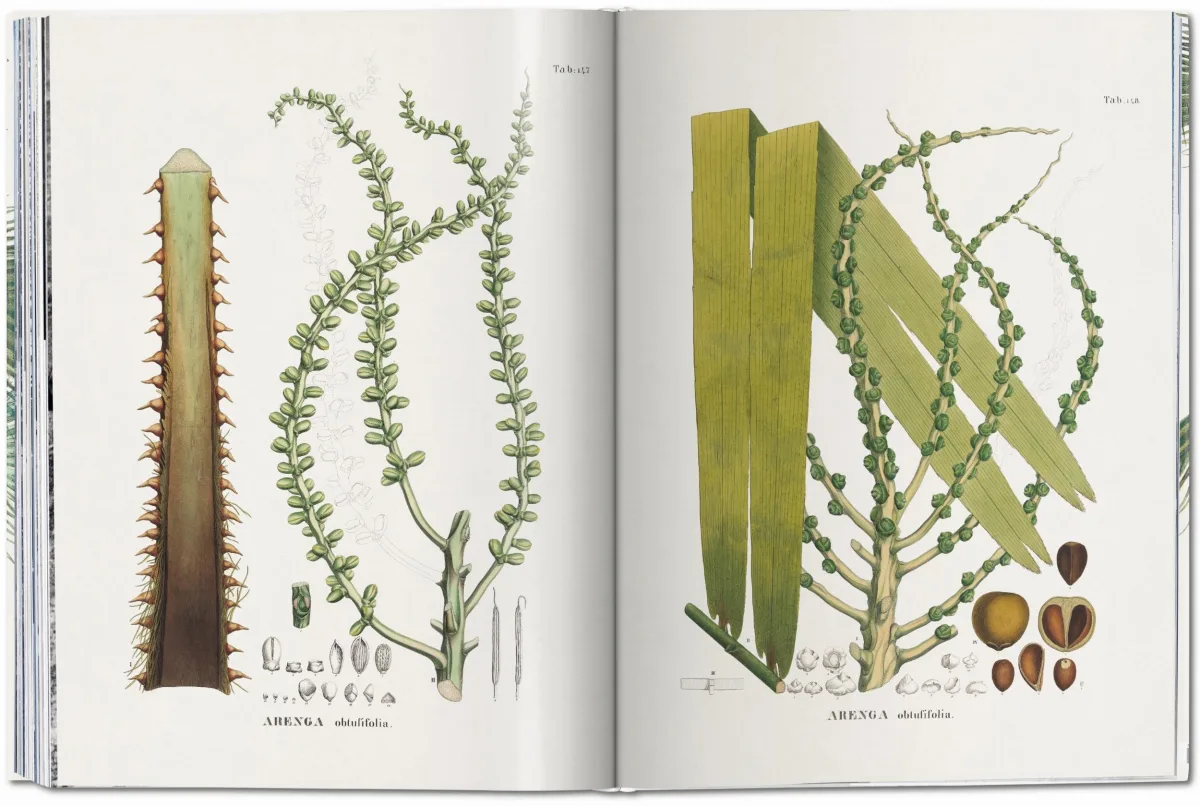1 / 8
XL
XL books are at least 34 cm (13.4 in.) high, with the exception of landscape-format titles
Martius. The Book of Palms
80
After an epic Amazonian journey through Brazil and Peru, German botanist von Martius compiled an unsurpassed catalogue of all known genera of palm. This exquisite encyclopedic treasury is a jewel of 19th-century botany, as remarkable for its meticulous classification, as it is for its maps, color landscapes, and cross-sectioned diagrams showing the architecture of these majestic trees.
Hardcover, 9.8 x 13.6 in., 6.29 lb, 412 pages
“An outstanding work: aesthetically as well as in content... A milestone of botanical research.”
“Beautifully detailed... A landmark in taxonomic description, botanical illustration, and the realistic representation of species in the landscape.”
“A beautiful, exuberant book..”
XL
XL books are at least 34 cm (13.4 in.) high, with the exception of landscape-format titles

Martius. The Book of Palms
80Trees of Paradise
All known genera of the palm family in 240 exquisite illustrations
On December 15, 1868, Carl Friedrich Philipp von Martius (1794–1868), Professor of Botany at the University of Munich and director of the Royal Botanic Garden, was carried to his grave in a coffin covered with fresh palm leaves. These were a reference to his groundbreaking Natural History of Palms: a work in three volumes, published between 1823 and 1853. At the time, this encyclopedic treasury contained the sum of human knowledge on the topic, and included 240 exquisite chromolithographic illustrations, featuring landscape views of palm habitats and botanical dissections.
This epic folio was based on von Martius’s expedition to Brazil and Peru with zoologist Johann Baptist von Spix, sponsored by King Maximilian I of Bavaria, to investigate natural history and native tribes. From 1817 to 1820 the pair traveled over 2,250 km (1,400 miles) throughout the Amazon basin, the most species-rich palm region in the world, collecting and sketching specimens. On their return both men were awarded knighthoods and lifetime pensions.
In his epic work, von Martius outlined the modern classification of palm, produced the first maps of palm biogeography, described all the palms of Brazil, and collated the sum of all known genera of the palm family. Apart from his own collection of specimens and notes, von Martius also wrote about the findings of others. Von Martius’s folio is unusual in its inclusion of cross-sectioned diagrams, conveying the architecture of these mighty trees, which central Europeans would have found hard to imagine accurately. Equally remarkable are the color landscapes showing various palms—often standing alone—which have a simple and elegant beauty. This famous work is an unrivaled landmark in botanic illustration and taxonomy.
This epic folio was based on von Martius’s expedition to Brazil and Peru with zoologist Johann Baptist von Spix, sponsored by King Maximilian I of Bavaria, to investigate natural history and native tribes. From 1817 to 1820 the pair traveled over 2,250 km (1,400 miles) throughout the Amazon basin, the most species-rich palm region in the world, collecting and sketching specimens. On their return both men were awarded knighthoods and lifetime pensions.
In his epic work, von Martius outlined the modern classification of palm, produced the first maps of palm biogeography, described all the palms of Brazil, and collated the sum of all known genera of the palm family. Apart from his own collection of specimens and notes, von Martius also wrote about the findings of others. Von Martius’s folio is unusual in its inclusion of cross-sectioned diagrams, conveying the architecture of these mighty trees, which central Europeans would have found hard to imagine accurately. Equally remarkable are the color landscapes showing various palms—often standing alone—which have a simple and elegant beauty. This famous work is an unrivaled landmark in botanic illustration and taxonomy.
The author
H. Walter Lack is a professor at the Free University of Berlin and former director of the Botanical Gardens and Botanical Museum in Berlin-Dahlem. A leading expert in the history of botany, his research focuses on the global transfer of useful and ornamental plants from a cultural historical perspective. He is the author of TASCHEN’s Garden of Eden, The Book of Palms and Redouté. The Book of Flowers.
Martius. The Book of Palms
Hardcover, 25 x 34.5 cm, 2.85 kg, 412 pagesISBN 978-3-8365-6614-8
Edition: Multilingual (English, French, German)Download product images here
5
Gorgeous!
October 27, 2021
A special coffe table book for exotic plant and palm enthusiasts, a joy for the eyes and a pleasure to peruse through every time I pick it up
